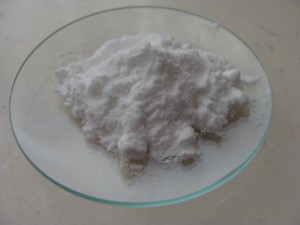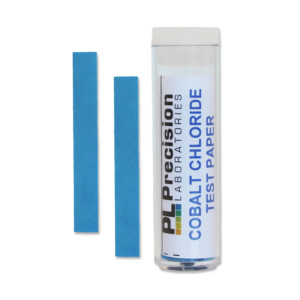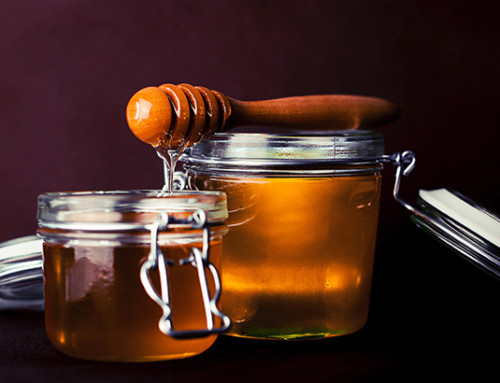This experiment is brought to you from Robert Bruce Thompson’s book, Illustrated Guide to Home Chemistry Experiments: All Lab, No Lecture. The experiment begins on page 167, and includes another section for going further that we do not cover in this post. This book is a great source for home chemistry experiments, and we strongly recommend you check it out!
Background
The refractory (using heat) decomposition of sodium hydrogen carbonate to sodium carbonate, carbon dioxide, and water is a typical decomposition reaction, in which a compound reacts to form two or more other elements and/or compounds. The balanced equation for this reaction is:
2 NaHCO3(s) → Na2CO3(s) + CO2(g) + H2O(g)
The refractory decomposition of sodium bicarbonate to sodium carbonate is the second most important decomposition reaction used in industrial processes, and is crucial to the world’s economy. This reaction is the final step in the Solvay process, which is used to produce about 75% of the world’s supply of sodium carbonate, also known as washing soda or soda ash. The other 25% is mined or extracted from brine.
 Worldwide production of sodium carbonate is more than 40 billion kilograms annually, about 7 kilograms for every person on the planet. Sodium carbonate is an essential component of glass, and is also used for hundreds of other purposes including processing wood pulp to make paper, as an ingredient in soaps and detergents, as a buffer, and as a neutralizer.
Worldwide production of sodium carbonate is more than 40 billion kilograms annually, about 7 kilograms for every person on the planet. Sodium carbonate is an essential component of glass, and is also used for hundreds of other purposes including processing wood pulp to make paper, as an ingredient in soaps and detergents, as a buffer, and as a neutralizer.
Unlike many decomposition reactions, which are essentially irreversible, the refractory decomposition of sodium hydrogen carbonate is easily reversible, and in fact a considerable amount of sodium hydrogen carbonate is produced commercially by this reverse reaction.
Na2CO3(s) + CO2(g) + H2O(g) → 2 NaHCO3(s)
Carbon dioxide gas is bubbled through a saturated solution of sodium carbonate and reacts to form sodium hydrogen carbonate, which is less soluble than sodium carbonate. The sodium hydrogen carbonate precipitates out, and is isolated by filtration.
In this lab, we’ll produce sodium carbonate from sodium hydrogen carbonate via a decomposition reaction.
Materials

- Goggles, gloves, and protective clothing
- Balance and weighing paper
- Ring stand
- Support ring
- Clay triangle
- Gas burner
- Crucible and lid
- Test tube
- Crucible tongs
- Test tube holder or clamp
- Sodium bicarbonate (~10g)
- Cobalt chloride test paper
- Toothpicks or wood splints
Substitutions and Modifications
- If you don’t have a crucible and lid, you can substitute a Pyrex dessert cup with a Pyrex saucer, watch glass, or similar heat-resistant item as a lid.
- If you do not have the recommended equipment needed to heat the samples, you can substitute a large tin can lid placed flat on a stove burner or hotplate.
- You may substitute a propane torch for the gas burner.
- You may substitute a pair of pliers or similar gripping tool for the crucible tongs. (Be careful, crucibles are fragile.)
Procedure
Caution: This experiment uses heat. Be careful with the heat source and when handling hot objects. Have a fire extinguisher readily available if your heat source uses flame. Wear splash goggles, gloves, and protective clothing. An adult supervisor should be present.
In this experiment, we’ll do qualitative testing to determine the products of the reaction.
- If you have not already done so, put on your splash goggles, gloves and protective clothing.
- Add sodium hydrogen carbonate to the test tube until it is about one quarter full.
- Light your gas burner (or alcohol lamp).
- Using the test tube holder or clamp, hold the test tube so that the flame heats that part of the test tube that contains the sodium hydrogen carbonate. Try to play the flame evenly over the entire sample. (Using a clamp mounted on a ring stand rather than a test tube holder makes the following steps easier, because it frees both hands. Otherwise, partner up so you can have someone help you.)
- After you have heated the sample for at least 15 to 30 seconds, ignite a toothpick or wood spline and insert the burning end into the top of the test tube. If the flame or ember is snuffed out, that’s a good indication that the reaction is producing carbon dioxide as expected. If the splint continues to burn, continue heating the sample until enough carbon dioxide is produced to displace the air inside the test tube. Then, try using the splint again.
- As you heat the sample, you should notice a liquid condensing on the cooler inside upper surfaced of the test tube, at first as fogging and later as actual droplets. Using a strip of Cobalt Chloride Test Paper, touch the strip to this liquid. Does it turn pink? If so, that confirms that the liquid is water.
Disposal: Sodium hydrogen carbonate and sodium carbonate are not hazardous. Flush them down the drain with plenty of water.
Going Further
To take this experiment a step further, check out p. 169 of the book, Illustrated Guide to Home Chemistry Experiments: All Lab, No Lecture. In part 2 of the experiment, you will determine the mass loss that occurs when sodium hydrogen carbonate is heated to decompose it to sodium carbonate.
Source: Illustrated Guide to Home Chemistry Experiments: All Lab, No Lecture, Robert Bruce Thompson, p. 167, https://books.google.com/books?id=iZVCN05SURsC&pg=PA167&lpg=PA167&dq=test+strip+experiments&source=bl&ots=U8lIoX4yix&sig=VPvwnuBemrK18q3-dcUMHjNZYuM&hl=en&sa=X&ved=0CDkQ6AEwAzgKahUKEwiLtoHRjPfIAhUY7WMKHWOjAKc#v=onepage&q=test%20strip%20experiments&f=false.







Leave A Comment